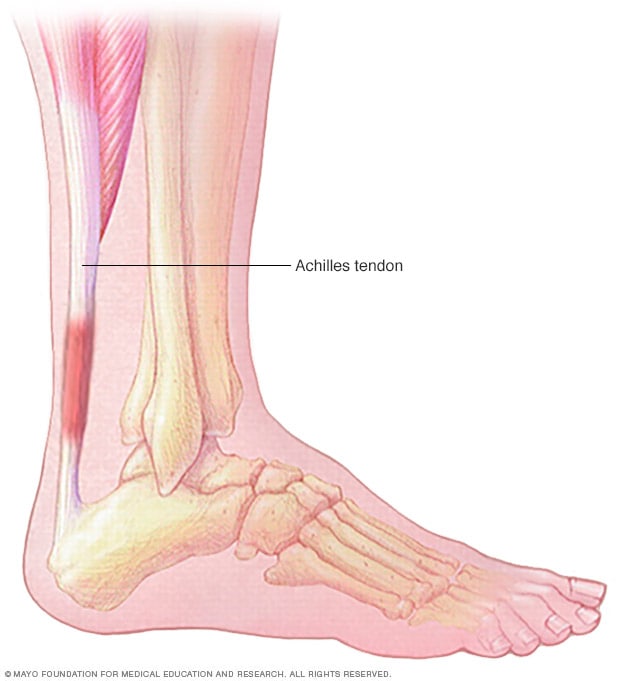Common Disorders of the Achilles Tendon
Achilles Tendonitis
Achilles tendonitis is an inflammation of the Achilles tendon. While the inflammation is usually short lived, it usually progresses to Achilles tendonosis.
Achilles Tendonosis
Achilles tendonosis occurs when the tendon itself begins to break down, and is more likely to develop microscopic tears. Sometimes this degeneration will involve the site where the Achilles attaches to the heel bone, and in rare cases, chronic tendonosis may result in an Achilles Tendon Rupture .
Symptoms
The symptoms of both Achilles tendonitis and tendonosis include:
Pain- This can occur anywhere along the tendon's length, from just above the heel to just below the calf muscle. Pain will usually occur after waking up or periods of rest or inactivity. This pain may improve slightly with motion, but then worsen with increased activity.
Tenderness, or possible intense pain, when the sides of the tendon are squeezed. However, there is typically less tenderness when pressing on the back of the tendon.
When the disorder progresses to degeneration, the patient may notice the Achilles has become enlarged, and may develop nodules in the area where the tissue is damaged.
Causes
Achilles tendonitis and tendonosis are considered "overuse" disorders, and are usually caused by sudden increases of repetitive activity. This activity puts too much stress on the Achilles too quickly, which results in micro-injuries to the tendon fibers. Because of the continous stress to the tendon, the body is unable to repair and maintain the injured tissue. This causes the structure of the tissue to become altered, resulting in continuous pain.
Athletes, people who perform manual labor or redundant tasks while working, like walking, climbing stairs, or pivoting on the ankle, are more prone to developing these disorders. Additionally, people with flat feet have a higher tendency to develop Achilles tendonitis and tendonosis, due to greater stress placed on the tendon while walking.
Diagnosis
In diagnosing these disorders, your podiatrist with examine your foot and ankle, evaluating your range of motion and the condition of the tendon. He or she may also order X-Rays, ultrasounds, or MRI to further guide their evaluation.
Prevention
To prevent these disorders from reoccurring after surgical or non-surgical treatment, your podiatrist might recommend stretches to strengthen your calf muscles daily. Wearing proper shoes for your foot type and the activity you are performing is also key in prevention.
Achilles Tendonitis. The red portion of the tendon represents inflammation. Achilles tendonosis appears much the same way, but results in microscopic damage.

